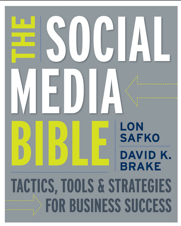
The
Declaration of Independence was formally accepted by the Continental Congress on July 4th, 1776. The missive consists of 1,137 words penned on parchment paper, words that changed the course of world history.
Thomas Jefferson is widely viewed as the "author" of the document, but it was truly a collaborative effort. (Interestingly, many of his colonial collaborators found Jefferson to be too wordy, and the final document was edited considerably before realizing its final form. Among the things his collaborators removed was a lengthy indictment of the slave trade ... ironic.)
We can only imagine how a
wiki may have aided the founding brothers in creating the finished piece that we celebrate today. If a wiki would have been a tool of those times, surely some of Jefferson's collaborators would have been
tweeting details of their conversations to their cohorts throughout the colonies, tweets that would have fueled countless
blogs no doubt. But alas, there was no web 2.0 in 1776.
There was, however,
social media. By turning the calendar back six months to January 9, 1776, we witness the publication of
Common Sense, a 55-page pamphlet that argued strongly for colonial independence. Though the first printing was published anonymously, we all know that the author was
Thomas Paine, whose rogue spirit has influenced countless journalists over the years and several of today's top bloggers, whether they realize it or not.
Upon publication,
Common Sense was very popular and in a little more than a month had gone into a third printing. Everyone was talking about it. Paine, who had apprenticed as a corset maker and worked in that trade on and off during his lifetime, played a huge role in engaging colonial America in conversation.
Common Sense was indeed a social medium. Here's a taste of Paine, from the opening pages of
Common Sense:
Some writers have so confounded society with government, as to leave little or no distinction between them; whereas they are not only different, but have different origins. Society is produced by our wants, and government by our wickedness; the former promotes our happiness positively by uniting our affections, the latter negatively by restraining our vices. The one encourages intercourse, the other creates distinctions. The first is a patron, the last a punisher.
Paine did not grown up in the colonies. He was born in Thetford, England in 1737. He came to America in 1774, encouraged by Benjamin Franklin. Paine's migration here may have been facilitated by his dismissal from his job as an excise officer. He was fired for writing a pamphlet that called on Parliament to increase the salaries of excise officers. Seems his calling as a "rabble rouser" with a pen was becoming clear to him.
Today we celebrate America's Declaration of Independence, but we might also want to contemplate the concept of independence and an early form of social media that enabled a new nation to engage in one of the most important conversations in history.
Where else but in America could a immigrant corset maker with an opinion have had such an impact on a nation?
Read more...









